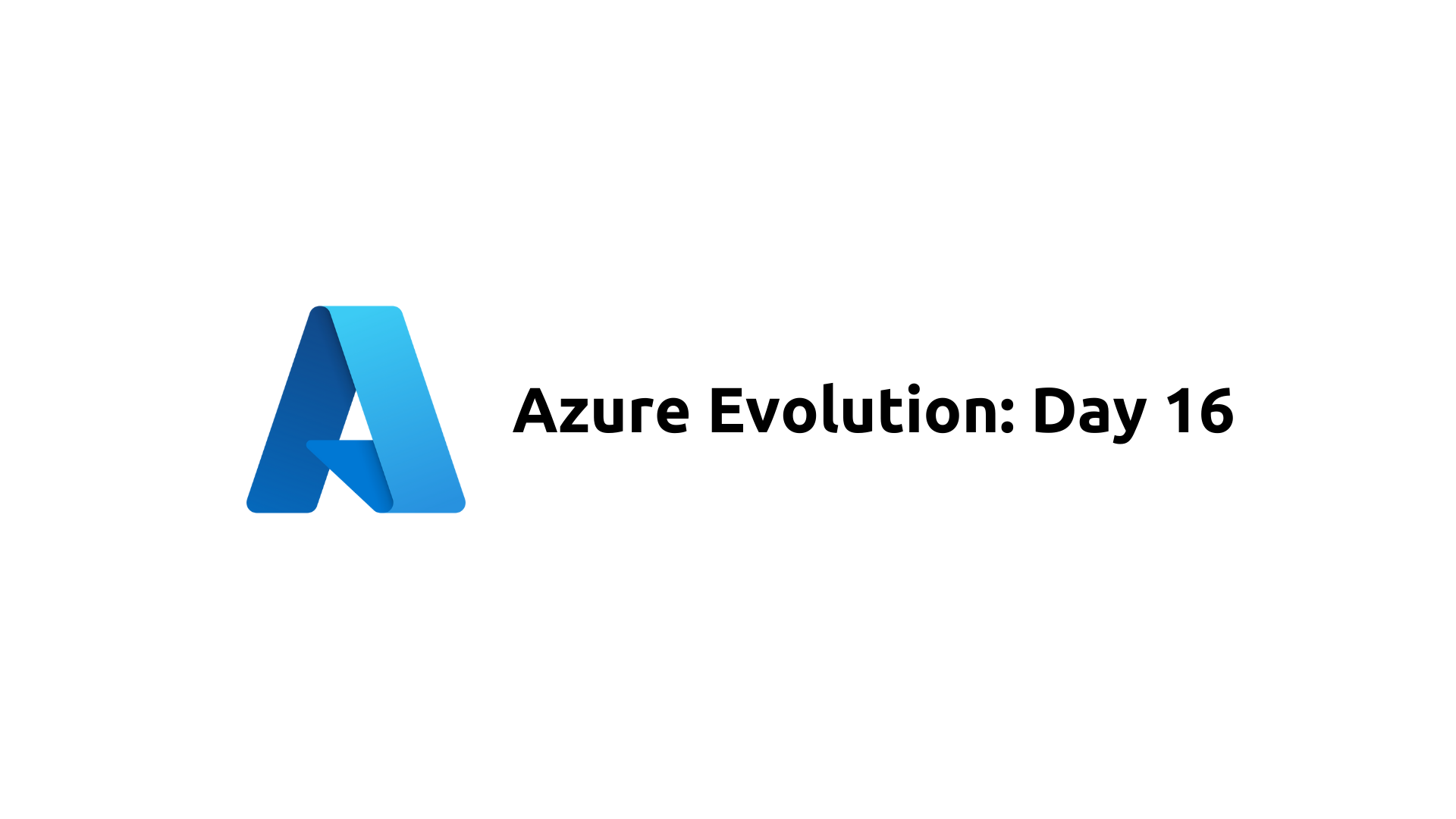Azure Evolution: Day 16 - Azure Repos: Empowering Modern Software Development
 Saurabh Adhau
Saurabh Adhau
Introduction
Azure Repos is a key component of the Azure DevOps suite, providing cloud-hosted source control for collaborative software development. With Azure Repos, development teams can use Git or Team Foundation Version Control (TFVC) to manage their code, streamline collaboration, and maintain version control. In this article, we will explore Azure Repos in detail, highlighting its features, benefits, and practical application through an example.
Key Features of Azure Repos
Unlimited Private Repositories:
- Azure Repos offers unlimited private Git repositories, allowing teams to create as many repositories as needed without worrying about cost.
Branching and Merging:
- Supports advanced branching and merging strategies, enabling teams to work on features, bug fixes, and experiments in isolated branches before merging them into the main codebase.
Pull Requests:
- Facilitates code reviews through pull requests, where team members can discuss changes, leave comments, and approve modifications before they are integrated into the main branch.
Code Search:
- Provides a powerful search feature that allows developers to search across repositories to find code snippets, variables, and functions quickly.
Integration with CI/CD Pipelines:
- Seamlessly integrates with Azure Pipelines, enabling automated builds, tests, and deployments whenever changes are pushed to the repository.
Security and Compliance:
- Ensures code security with features like branch policies, required reviewers, and integration with Azure Active Directory for access control.
Benefits of Using Azure Repos
Enhanced Collaboration:
- Azure Repos makes it easy for teams to collaborate on code, with tools for code reviews, discussions, and feedback directly within the platform.
Improved Code Quality:
- With pull requests and branch policies, Azure Repos ensures that only reviewed and approved code makes it into the main branch, thereby enhancing the overall quality of the codebase.
Streamlined Workflows:
- Integration with Azure Pipelines allows for the automation of build, test, and deployment processes, reducing manual effort and speeding up the delivery pipeline.
Scalability:
- Suitable for projects of any size, from small teams to large enterprises, providing the scalability needed to manage extensive codebases and large development teams.
Visibility and Transparency:
- Provides detailed commit histories, activity feeds, and insights into repository activity, enhancing visibility and transparency within the development process.
Example: Using Azure Repos in a Web Development Project
Let’s walk through a practical example of how Azure Repos can be used in a web development project.
Project Scenario: A development team is building a web application that requires collaboration between front-end and back-end developers. The team decides to use Azure Repos for version control and code collaboration.
Step 1: Create a Repository:
The team lead creates a new repository in Azure Repos named
web-application.The repository is initialized with a README file and a
.gitignorefile to exclude unnecessary files from being tracked.
Step 2: Clone the Repository:
Developers clone the repository to their local machines using the command:
git clone https://dev.azure.com/your-organization/web-application/_git/web-application
Step 3: Branching Strategy:
The team decides on a branching strategy where
mainis the production branch,developis the integration branch, and feature branches are created for individual features or bug fixes.A developer working on a new feature creates a feature branch:
git checkout -b feature/login
Step 4: Commit and Push Changes:
The developer makes changes to the code, commits them locally, and pushes the branch to Azure Repos:
git add . git commit -m "Add login feature" git push origin feature/login
Step 5: Create a Pull Request:
Once the feature is complete, the developer creates a pull request in Azure Repos to merge
feature/loginintodevelop.The pull request includes a description of the changes and requests reviews from team members.
Step 6: Code Review and Merge:
Team members review the pull request, leave comments, and suggest changes.
After addressing feedback, the pull request is approved and merged into the
developbranch.
Step 7: Continuous Integration and Deployment:
Azure Pipelines is configured to trigger automated builds and tests whenever changes are pushed to the
developbranch.Successful builds are then deployed to a staging environment for further testing.
Step 8: Final Deployment:
- Once the feature is tested and approved in the staging environment, it is merged into the
mainbranch and deployed to production.
Conclusion
Azure Repos is a powerful and versatile tool for managing source code and enabling collaboration in software development projects. Its integration with the broader Azure DevOps ecosystem makes it an invaluable asset for teams looking to implement efficient, scalable, and secure development workflows. By leveraging the features and benefits of Azure Repos, development teams can improve code quality, streamline processes, and accelerate the delivery of high-quality software. In upcoming blogs, we will do hands-on exercises and deep dive into Azure DevOps.
Subscribe to my newsletter
Read articles from Saurabh Adhau directly inside your inbox. Subscribe to the newsletter, and don't miss out.
Written by

Saurabh Adhau
Saurabh Adhau
As a DevOps Engineer, I thrive in the cloud and command a vast arsenal of tools and technologies: ☁️ AWS and Azure Cloud: Where the sky is the limit, I ensure applications soar. 🔨 DevOps Toolbelt: Git, GitHub, GitLab – I master them all for smooth development workflows. 🧱 Infrastructure as Code: Terraform and Ansible sculpt infrastructure like a masterpiece. 🐳 Containerization: With Docker, I package applications for effortless deployment. 🚀 Orchestration: Kubernetes conducts my application symphonies. 🌐 Web Servers: Nginx and Apache, my trusted gatekeepers of the web.